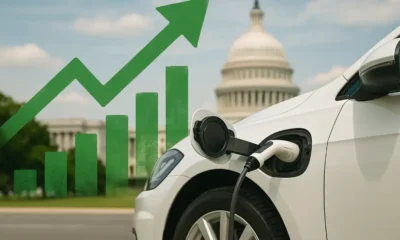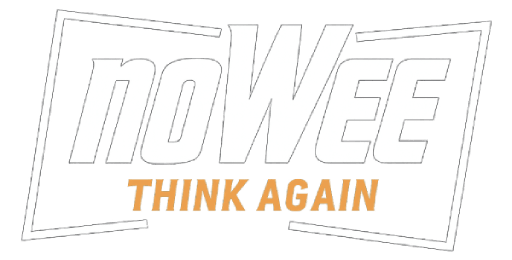Understanding Total Loss Threshold by State and What It Means for Your Vehicle
Estimated reading time: 7 minutes
Key Takeaways
- Total loss thresholds vary by state, impacting insurance claim outcomes.
- Insurance companies use either a percentage rule or a formula to determine if a vehicle is a total loss.
- Understanding your state’s specific rules can help you negotiate a fair settlement.
Navigate to What Matters
![what to do if car is totaled [state]](https://nowee.org/wp-content/uploads/2025/09/image_0-1024x576.webp)
Introduction
When your car is damaged in an accident, insurance companies use the total loss threshold by state to determine if your vehicle should be repaired or declared a total loss. This critical percentage varies significantly depending on where you live, directly impacting your insurance claim outcome.
The total loss threshold is essentially the point at which repair costs exceed a certain percentage of your vehicle’s actual cash value (ACV). Understanding your state’s specific rules can help you navigate insurance claims more effectively and ensure you receive fair compensation.
“Each state follows either a specific percentage rule or a formula to determine when a car is considered totaled. These thresholds range from as low as 70% to as high as 100% of your car’s value.”
How Insurance Companies Determine Total Loss
Insurance providers typically use one of two methods to decide if your vehicle is a total loss:
The Totaled Car Percentage Rule
Many states establish a specific percentage threshold. When repair costs exceed this percentage of your vehicle’s ACV, the car must be declared a total loss.
For example, if your car has an ACV of $10,000 and your state’s threshold is 75%:
- Repair costs of $7,600 would exceed the threshold
- The vehicle would be declared totaled
- You would receive a settlement based on the ACV
The Total Loss Formula (TLF)
Some states use a formula rather than a fixed percentage. The formula works like this:
Cost of Repairs + Salvage Value ≥ Actual Cash Value = Total Loss
For example, if your $10,000 car needs $6,000 in repairs and has a salvage value of $4,500:
- $6,000 (repairs) + $4,500 (salvage) = $10,500
- Since $10,500 exceeds the $10,000 ACV, the car is totaled
This method considers both repair costs and what the vehicle would be worth as salvage; see this explanation.
State-by-State Total Loss Threshold Table
Use this quick reference guide to find your state’s specific threshold requirements:
| State | Threshold | Method |
|---|---|---|
| Alabama | 75% | Percentage of ACV |
| Alaska | TLF | Total Loss Formula |
| Arizona | TLF | Total Loss Formula |
| Arkansas | 70% | Percentage of ACV |
| California | TLF | Total Loss Formula |
| Colorado | 100% | Percentage of ACV |
| Connecticut | TLF | Total Loss Formula |
| Delaware | TLF | Total Loss Formula |
| Florida | 80% | Percentage of ACV |
| Georgia | 75% | Percentage of ACV |
| Hawaii | TLF | Total Loss Formula |
| Idaho | TLF | Total Loss Formula |
| Illinois | TLF | Total Loss Formula |
| Indiana | 70% | Percentage of ACV |
| Iowa | 75% | Percentage of ACV |
| Kansas | 75% | Percentage of ACV |
| Kentucky | 75% | Percentage of ACV |
| Louisiana | 75% | Percentage of ACV |
| Maine | TLF | Total Loss Formula |
| Maryland | 75% | Percentage of ACV |
| Massachusetts | TLF | Total Loss Formula |
| Michigan | 75% | Percentage of ACV |
| Minnesota | 70% | Percentage of ACV |
| Mississippi | TLF | Total Loss Formula |
| Missouri | 80% | Percentage of ACV |
Notable outliers include Texas with a 100% threshold, meaning repair costs must equal or exceed the full value of the car before it’s totaled, while Arkansas has one of the lowest thresholds at 70%.
Always verify current salvage threshold requirements for your specific state as regulations can change.
What Happens When Your Car Exceeds the Threshold
When your vehicle’s damage exceeds your state’s total loss threshold, several important processes begin:
Insurance Payout Based on ACV
Your insurance company will offer you a settlement based on your car’s Actual Cash Value, not the replacement cost. This valuation considers:
- Original purchase price
- Depreciation based on age
- Mileage and condition before the accident
- Recent sales of similar vehicles in your area
This payout is often negotiable if you can prove your car was worth more than the insurer’s initial offer.
Salvage Title Implications
Once declared a total loss, your vehicle will receive a salvage title designation. This classification has significant consequences:
- The car cannot be legally driven on public roads
- Most insurance companies won’t cover a salvage vehicle
- Resale value drops considerably
- Registration requires special inspections in most states
Understanding your state’s salvage threshold is crucial because this title status follows the vehicle permanently, even if repaired.
Smart Steps After a Total Loss Declaration
If your vehicle has been declared a total loss, take these proactive steps:
Verify the Assessment
Double-check that your car truly exceeds your state’s total loss threshold. Request detailed documentation showing:
- The complete repair cost estimate
- The calculation method used
- Your vehicle’s pre-accident value determination
Many insurers use third-party valuation tools that may undervalue your vehicle.
Negotiate Effectively
Don’t accept the first offer. To improve your negotiating position:
- Research comparable vehicles in your area
- Gather maintenance records showing your car’s excellent condition
- Document recent upgrades or new parts
- Get an independent appraisal if significant money is at stake
Remember, the totaled car percentage rule in your state establishes the minimum threshold, but you can still advocate for fair compensation. For assistance, see this overview.
Replacement Options
After accepting your vehicle’s total loss status, consider these replacement options:
Research Alternatives
Start your search for a replacement vehicle by:
- Comparing similar models within your settlement budget
- Checking both new and used inventory
- Considering certified pre-owned options with warranties
- Exploring lease takeovers for potential savings
Buyback Considerations
In many states, you can “buy back” your totaled vehicle from the insurance company:
- The insurer deducts the salvage value from your settlement
- You keep the damaged car along with a reduced payout
- The vehicle retains its salvage title status
- You’re responsible for repairs and special inspections
This option makes sense if your car has sentimental value or you believe you can repair it cost-effectively. More information can be found at Policygenius.
Conclusion
Understanding the total loss threshold by state empowers you to navigate insurance claims with confidence. These thresholds vary significantly across the country, with some states using strict percentage rules while others employ more complex formulas.
When facing a potential total loss situation, knowledge of your state’s specific requirements helps you verify insurance assessments and negotiate fair settlements. Remember that these thresholds establish minimum standards, but you always have the right to question valuations and repair estimates.
Take time to review your state’s particular total loss threshold before accepting any settlement offer. This simple step can potentially save you thousands of dollars and help you make more informed decisions about your vehicle’s future. Here is a quick checklist (48-Hour Checklist if Your Car is Totaled [State]); see this page for total loss appraisals.
Related reading:
- Understand the forces behind electric vehicle adoption (How Government Policies Impact EV Adoption)
- You may want to review diminshed value claim in your state (Diminished Value Claim [State]: Your Complete Guide to Recovering Lost Vehicle Value).
- Are you considering an electric car? (Choosing the Right Electric Vehicle: The Ultimate Guide for Families)
- Learn more about EV battery innovations (Battery Technology for EVs: The Driving Force Behind Electric Vehicle Innovation).
- Thinking about reducing waste? (Reducing Food Waste: How AI and Smart Kitchen Technology Are Transforming Sustainable Living)
Below are quick answers to common questions about total loss thresholds.
FAQs
ACV vs Repair Cost: Understand Your Options After a Car Accident
Estimated reading time: 8 minutes
Key Takeaways
- Insurers total a vehicle when repair costs hit 70-75% of its Actual Cash Value (ACV).
- ACV is calculated by subtracting depreciation from the replacement cost and adjusting for market factors.
- Hidden damage discovered during repairs can increase costs, potentially leading to a total loss declaration.
- Negotiating with insurers using documented evidence can improve settlement payouts.
- Consider long-term reliability and financial implications before deciding to repair or accept a total loss settlement.
Navigate to What Matters

Introduction
After an accident, you face a critical financial decision: repair your vehicle or accept an insurance payout? Understanding the relationship between ACV vs repair cost can save you thousands of dollars and prevent costly mistakes.
Actual Cash Value (ACV) represents what your car is worth today, not what you paid for it. It factors in depreciation and current market conditions to determine your vehicle’s present value.
“The key to a successful claim is understanding how insurance companies assess damage and value vehicles.”
Understanding ACV vs Repair Cost
Repair cost, on the other hand, is the total expense required to restore your vehicle to its pre-accident condition, including parts, labor, and other necessary services.
When these two figures collide during the claims process, you need to understand how insurers make decisions and how you can protect your financial interests. See this information.
How Insurers Determine Total Loss
When insurance companies evaluate accident damage, they use a specific formula to decide whether your car is a “total loss” or worth repairing.
Most insurers follow the total loss threshold formula: if repair costs exceed 70-75% of your vehicle’s ACV, they’ll declare it a total loss. For example, if your car is worth $10,000, repairs exceeding $7,000-$7,500 would likely trigger a total loss declaration.
The evaluation process typically includes:
- Initial damage assessment by an insurance adjuster
- Detailed repair estimates from body shops
- Vehicle valuation based on make, model, year, and condition
- Calculation of the repair-to-value ratio
Different states have varying legal thresholds for total loss declarations. Some use a straight percentage (like 75%), while others use a Total Loss Formula (TLF) that considers salvage value alongside repair costs. For further reading on this, see our guide on understanding the total loss threshold by state (Total Loss Threshold by State).
Understanding how insurers determine total loss empowers you to question their assessment if you believe it’s unfair or inaccurate. Learn more (LINK TEXT) [https://www.kbb.com/car-advice/actual-cash-value/].
Actual Cash Value Car Calculation Explained
The actual cash value car calculation uses a relatively straightforward formula:
ACV = Replacement Cost – Depreciation + Market Adjustments
Replacement cost refers to what you’d pay for an identical vehicle in today’s market. Depreciation accounts for the vehicle’s decreased value over time, influenced by:
- Vehicle age (typically 15-25% depreciation in the first year)
- Mileage (high mileage accelerates depreciation)
- Pre-existing damage or wear
- Maintenance history
- Previous accidents
Market adjustments consider local market conditions, vehicle popularity, and special features that might increase value. To maximize your appeal, see what’s the best time to sell a car (Best Time to Sell a Car).
For example, a 2018 sedan with an original price of $25,000 might have a replacement cost of $20,000 today. With $8,000 in depreciation due to age, mileage, and condition, plus $1,000 in positive market adjustments for desirable features, the ACV would be:
$20,000 – $8,000 + $1,000 = $13,000
Understanding this calculation helps you verify whether your insurer’s valuation is fair and accurate. Find out more information (LINK TEXT) [https://www.experian.com/blogs/ask-experian/actual-cash-value-vs-replacement-cost-for-car-insurance/].
Interactive ACV Estimator Tool
To quickly estimate your vehicle’s ACV and compare it against repair costs, follow this simplified calculation:
- Find similar vehicles for sale in your area (check Kelley Blue Book or local listings)
- Calculate the average asking price
- Subtract for negative factors:
- Deduct 10-15% for high mileage (over 12,000 miles per year)
- Deduct 5-10% for poor condition
- Deduct 5-15% for accident history
- Add for positive factors:
- Add 3-5% for recent major repairs or upgrades
- Add 2-5% for desirable features
Let’s use this formula to compare ACV vs repair cost in a real-world scenario:
A 2017 Honda Accord with 70,000 miles has an average listing price of $16,500. With slightly high mileage (-5%) and good condition, the estimated ACV is $15,675. If repair costs after an accident are $12,000, that’s approximately 77% of the ACV—likely making it a total loss.
See also these examples.
Supplements and Hidden Damage
One of the most common complications in the ACV vs repair cost evaluation is the discovery of hidden damage after repairs begin. These additional repair costs, called “supplements,” can push a repairable vehicle over the total loss threshold.
Supplements typically occur when:
- Structural damage becomes visible only after disassembly
- Damaged parts reveal additional problems
- Safety systems require recalibration
- Parts availability issues increase labor costs
For example, what initially appears as $8,000 in repairs on a $12,000 vehicle (67% of ACV) might increase to $9,500 with supplements, pushing it to 79% and triggering a total loss declaration.
To protect yourself, ask the body shop for a thorough preliminary inspection and request they note potential hidden damage areas that could affect how insurers determine total loss.
Negotiation Tactics for Better Payouts
When facing a total loss situation, you don’t have to accept the first ACV offer from your insurer. Consider these negotiation strategies:
- Gather evidence of your vehicle’s value with screenshots of comparable vehicles for sale in your area
- Document recent improvements like new tires, brakes, or other major components
- Obtain an independent appraisal if the difference is significant
- Present maintenance records showing above-average care
- Research unique features that might increase value
- Consider the car’s pre-accident condition compared to average
The actual cash value car calculation isn’t set in stone. By presenting compelling evidence, you can often increase the insurer’s offer by 5-15%, potentially adding hundreds or thousands to your settlement.
Remember that adjusters initially aim for the lower end of the value range. Your documented research creates leverage for negotiation. If you decide to sell your car, review CarMax vs Carvana (CarMax vs Carvana Comparison) and decide where to sell it and get more money.
Decision-Making Tools
When weighing whether to repair your vehicle or accept a total loss settlement, consider using these resources:
- Replacement Vehicle Checklist: Compare your settlement amount against available replacement options in your market
- Instant Cash Offer tools: Get immediate valuations from services like Kelley Blue Book to verify the fairness of insurer offers
- Cost-benefit analysis: Consider future reliability and safety against the settlement amount
The ACV vs repair cost decision isn’t just about current numbers—it’s about future value and reliability. Sometimes accepting a total loss makes financial sense even when the threshold hasn’t been reached, especially with older vehicles where repair quality might not restore full functionality. After an accident, you may qualify for a diminished value claim (Diminished Value Claim Guide).
See this additional advice.
Below are answers to frequently asked questions about **ACV vs repair cost** decisions.
How to Sell a Leased Car to CarMax: Step-by-Step Third-Party Payoff Guide
Estimated reading time: 7 minutes
Key Takeaways
- Selling a leased car to CarMax is possible via a third-party payoff.
- Not all leasing companies allow third-party payoffs; check your lease agreement.
- Equity can be captured if CarMax’s offer exceeds your lease payoff amount.
Introduction
Are you wondering if you can sell your leased car to CarMax and possibly walk away with some extra cash? The good news is that selling a leased car to CarMax is entirely possible through a process called third-party payoff.
With rising vehicle costs and market values, many drivers are discovering they have equity in their leased vehicles. This creates an opportunity to exit your lease early while potentially pocketing the difference between your car’s current value and the remaining lease payoff.
Let’s explore exactly how to sell a leased car to CarMax, navigate the third-party payoff process, and maximize your potential returns.
Navigate to What Matters

“Selling your leased car can be a win-win situation.”
Understanding Third-Party Lease Payoffs
A third-party lease payoff is the mechanism that allows you to sell your leased vehicle to CarMax without buying it yourself first. This process enables CarMax to purchase the vehicle directly from your leasing company.
When you sell a leased car to CarMax, they contact your lender to obtain the exact payoff quote. CarMax then handles the payment directly to your leasing company and manages any equity distribution if your car is worth more than the payoff amount.
However, not all leasing companies allow third-party payoffs. Some manufacturers and finance companies have implemented restrictions that require you to buy the car yourself before selling it. Honda, Acura, GM, and BMW are examples of brands that have placed such restrictions in recent years.
Your equity calculation is simple: the difference between CarMax’s offer and your lease payoff amount. If the offer exceeds your payoff, you receive the difference as profit. For more clarity on your options, explore (see Lease Buyout Calculator: Your Options).
Step-by-Step Process to Sell Your Leased Car to CarMax
Step 1: Check Your Lease Agreement for Third-Party Eligibility
Before proceeding, review your lease agreement or contact your leasing company to confirm they allow third-party buyouts. This critical first step prevents wasting time if your leasing company restricts the practice.
Step 2: Contact Your Lender for Payoff Information
Call your leasing company to request the exact payoff amount. This figure represents what CarMax would need to pay to purchase your vehicle. Ask if there are any special procedures or forms required for a third-party buyout.
Step 3: Get a CarMax Offer
You can obtain a CarMax offer in two ways:
* Complete an online appraisal through the CarMax website
* Visit a local CarMax store for an in-person inspection
CarMax offers remain valid for seven days, giving you time to compare with other offers. Their appraisal process typically takes about 30 minutes when done in person.
Step 4: Submit Payoff Request to Your Lender
If your lender allows third-party payoffs, inform them you’re selling to CarMax. Some lenders require specific authorization forms or have particular instructions for completing the transaction.
Step 5: Finalize the Sale and Complete Ownership Transfer
Bring all required documents to CarMax:
* Lease agreement
* Payoff statement from your lender
* All keys and remotes
* Valid photo ID
* Registration documents
CarMax will handle the payoff to your leasing company and process any equity payment to you if applicable. This may involve navigating (see Lease Buyout Taxes in California: A Comprehensive Guide).
Equity Capture Scenarios with Real Examples
Positive Equity Scenario
This is the ideal situation when selling a leased car to CarMax. For example, if your lease payoff amount is $18,000, but CarMax offers $22,000, you’ll receive the $4,000 difference.
This scenario has become more common due to vehicle shortages and increased used car values in recent years. Many lessees have discovered thousands in unexpected equity.
Break-Even Scenario
If CarMax’s offer matches your payoff amount exactly, you won’t receive cash, but you’ll exit your lease without paying early termination fees. This can still save you money compared to completing your lease term.
For example, if your payoff is $20,000 and CarMax offers $20,000, you walk away free and clear without the typical $350-500 lease termination fee. Wondering about other termination scenarios? See (see Understanding Early Lease Termination Fees).
Negative Equity Scenario
When your payoff exceeds CarMax’s offer, you’ll need to pay the difference to complete the sale. For instance, if your payoff is $25,000 but CarMax offers $23,000, you must pay $2,000 to exit the lease.
This scenario is less common in today’s market but still possible with vehicles that have depreciated quickly or if you’re far from your lease-end date.
CarMax vs. Carvana: Lease Buyout Process Comparison
When selling a leased car, comparing your options can maximize your return. Here’s how CarMax stacks up against Carvana:
| Feature | CarMax | Carvana |
|---|---|---|
| Appraisal Method | In-person or online | Online only |
| Offer Validity | 7 days | 7 days |
| Payment Processing | Same-day possible | Takes 2-3 business days |
| Inspection Process | Immediate, in-person | Photos required |
| Lender Relations | Direct relationships with many lenders | Similar restrictions apply |
CarMax offers distinct advantages when selling a leased car, including immediate in-person appraisals and same-day payment processing. Their physical locations allow you to complete the entire transaction in one visit.
Carvana provides a fully online experience but may take longer to process payments and complete the transaction. Both companies face similar lender restrictions regarding third-party payoffs. For more on the future of transport, consider (see Hydrogen Fuel Cell Vehicles: Revolutionizing the Future of Green Transportation).
Key Resources & Tools
Lender Third-Party Payoff Eligibility List
Before starting the process, check our updated lender list to confirm if your leasing company allows third-party payoffs. This resource saves time by helping you determine eligibility before visiting CarMax.
Payoff Request Template
Use our customizable template when contacting your lender for payoff information. This form includes all the essential information lenders typically require to process third-party payoffs.
Remember to contact your lender early in the process. Delays in receiving payoff information can potentially cost you money if market conditions change or your next lease payment comes due.
Frequently Asked Questions
Q: Can I sell my leased car to CarMax if I still owe money?
A: Yes, you can sell a leased car to CarMax even if you still owe money on the lease. CarMax will pay off your lease directly with your leasing company as long as third-party payoffs are permitted.
Q: What happens if CarMax’s offer is less than my payoff amount?
A: If CarMax offers less than your payoff amount, you’ll need to pay the difference to complete the sale. This payment covers the negative equity between the vehicle’s current value and what you still owe.
Q: How long does the third-party payoff process take?
A: The entire process typically takes 1-3 business days once you accept CarMax’s offer. The timeline depends largely on your lender’s speed in processing the payoff and releasing the title.
Q: Which lenders restrict third-party lease payoffs?
A: Several major lenders have implemented restrictions, including Honda Financial Services, GM Financial, BMW Financial Services, and others. Always contact your specific leasing company to confirm their current policy.
Conclusion
Selling your leased car to CarMax offers a straightforward path to potentially capture equity and exit your lease early. By understanding the third-party payoff process and following our step-by-step guide, you can navigate the transaction with confidence.
Remember that market conditions fluctuate, affecting vehicle values. If you discover you have equity in your leased vehicle, acting quickly could maximize your return before values decrease.
With proper planning and the right documentation, selling a leased car to CarMax can be completed in just a few days, potentially putting extra cash in your pocket while freeing you from your lease obligations. To ready your car see here (see End of Lease Inspection: What to Fix).
Understanding Excess Mileage Lease Options: How to Avoid Costly Overage Fees & Explore Alternatives
Estimated reading time: 7 minutes
Key Takeaways
- Excess mileage fees can significantly increase the cost of your car lease at the end of the term.
- Negotiating with your leasing company is a key strategy to reduce or waive excess mileage charges.
- Tools like lease buyout calculators help compare the cost of paying fees versus buying the vehicle.
Introduction
Are you nearing the end of your car lease only to discover you’ve driven far more miles than your contract allows? Excess mileage lease options can save you from shocking fees that often reach $0.30 per mile over your limit. These unexpected charges can add thousands to your final bill, turning what seemed like an affordable lease into a financial burden.
But don’t panic. This guide explores three proven solutions: negotiating with your leasing company, calculating whether to pay fees or buy out your lease (see our Lease Buyout Calculator Guide), and finding alternative options that could save you money.
Navigate to What Matters

“Mileage limits aren’t suggestions – they’re contractual obligations with real financial consequences when exceeded.”
Understanding Lease Mileage Overage Costs
Standard vehicle lease agreements typically include annual mileage caps ranging from 10,000 to 13,000 miles per year. These limits aren’t suggestions – they’re contractual obligations with real financial consequences when exceeded.
When you surpass these limits, lease mileage overage costs kick in at rates between $0.18 and $0.30 per mile. This might not sound significant until you do the math.
For example, if you exceed your limit by 10,000 miles, you could face fees between $1,800 (at $0.18/mile) and $3,000 (at $0.30/mile). That’s enough to make anyone reconsider their driving habits!
It’s important to note that these charges apply at the end of your lease term, not annually. The leasing company tallies your total mileage only when you return the vehicle.
(Source)
Comparing Your Options: Pay Per-Mile vs. Buyout vs. Selling
When facing excess mileage lease options, you generally have three paths forward:
| Option | Upfront Cost | Pros | Cons |
|---|---|---|---|
| Paying Overage Fees | $0.18-$0.30/mile | Simple process; no financing needed | No asset ownership; potentially expensive |
| Vehicle Buyout | Residual value + fees | Avoids mileage penalties; keeps your car | Requires financing; may exceed market value |
| Third-Party Selling | Market assessment | Could cover buyout and avoid fees | Market value fluctuations; requires approval |
The simplest option is paying the overage fees directly, but it’s often the most expensive choice with nothing to show for your money.
Buying out your lease means purchasing the vehicle at its predetermined residual value. This eliminates mileage penalties entirely since you’re keeping the car. For more ways to avoid charges, see our guide.
The third option involves selling to a third party like CarMax. If the market value exceeds your buyout price, you might cover both the buyout and avoid mileage penalties completely.
(Source)
Step-by-Step Negotiation Script
Before accepting steep fees, try to negotiate lease mileage charges with your leasing company. Here’s a proven three-step approach:
Acknowledge your customer loyalty
“I’ve been leasing with your company for X years and have always valued our relationship.”Request fee reduction or waiver
“Given my history as a reliable customer, would you consider reducing or waiving some of the excess mileage charges I’m facing?”Suggest compromise solutions
“I’m open to discussing options like extending my lease term or leasing another vehicle if we can find a solution for these mileage charges.”
Timing significantly impacts negotiation success. Contact your leasing company early, ideally several months before your lease ends. This shows proactivity and gives them more flexibility in working with you.
Remember to remain polite but persistent. Leasing companies have discretionary authority to adjust fees, especially for customers they want to retain for future business.
(Source)
Decision-Making Tools
Making the right decision requires accurate calculations and comparisons. Using a buyout calculator (see Find Out If Buying Makes Sense) can help determine whether paying overage fees or purchasing your vehicle makes more financial sense.
This tool factors in your current mileage, remaining lease term, and contract details to provide a clear cost comparison. In many cases, the calculator reveals that buying the vehicle costs less than paying excessive mileage penalties.
For those considering selling their leased vehicle, a sell-to-CarMax guide can walk you through the process of getting your vehicle appraised and potentially sold to cover your buyout obligations.
These tools eliminate guesswork from your decision-making process, helping you identify the most cost-effective solution for your specific situation.
Action Checklist for Excess Mileage
Take these steps when addressing excess mileage concerns:
- Verify your current mileage against your contract limit
- Calculate exact overage costs using your per-mile rate
- Research your vehicle’s current market value through resources like Kelley Blue Book
- Contact your leasing company using the negotiation script above
- Compare all available options using the calculators mentioned
- Make your decision at least 60-90 days before lease end for maximum flexibility. You might also want to review early lease termination fees.
Having accurate information about your specific situation helps you approach the leasing company from a position of knowledge rather than uncertainty.
(Source)
Conclusion
Facing excess mileage lease options doesn’t have to result in financial hardship. By understanding your contract, calculating your options, and taking action early, you can potentially save thousands of dollars.
Remember your three main paths: negotiate with your leasing company, calculate whether a buyout makes sense, or explore third-party selling options. Each situation is unique, so use the tools and strategies outlined here to determine which solution best fits your circumstances.
Don’t wait until the last minute – the earlier you address potential mileage overages, the more options you’ll have available. Take control of your lease situation today by calculating your exact position and exploring all available excess mileage lease options. Another important factor is understanding any (Lease Buyout Taxes in California) applicable to your location.
FAQ
Q: What is the typical mileage allowance in a car lease agreement?
A: Standard mileage allowances usually range from 10,000 to 13,000 miles per year, but can vary based on the lease terms.
Q: How are excess mileage charges calculated?
A: Excess mileage charges are calculated by multiplying the number of miles you exceed the contract limit by the per-mile rate specified in your lease agreement, typically between $0.18 and $0.30 per mile.
Understanding Early Lease Termination Fees
Estimated reading time: 7 minutes
Key Takeaways
- Understand the costs involved in early lease termination, including fees and penalties.
- Explore alternatives like lease swaps and negotiation to minimize or avoid these fees.
- Make informed financial decisions by comparing the costs of termination versus other options.
Introduction
Are you facing a sudden job relocation or financial changes that require breaking your lease? If so, understanding the early lease termination fee is crucial before making any decisions.
Breaking a lease can be costly, but knowing your options might save you significant money. From lease swap options to negotiation strategies, there are several alternatives to consider before accepting hefty penalties.
Navigate to What Matters

“Early knowledge gives you more time to explore alternatives.”
Understanding Early Lease Termination Fees
An early lease termination fee is the penalty you pay when ending your lease before the agreed-upon date. This fee compensates landlords for lost income and administrative costs associated with finding a new tenant unexpectedly.
These fees typically follow one of two structures: a fixed amount (like $200) or a percentage of your remaining payments. Some agreements even require payment of all remaining rent, which can be substantial.
For example, if you break a 12-month lease after only 6 months with a $1,000 monthly rent and a $200 administrative fee, you could face a penalty of $6,200 ($1,000 × 6 remaining months + $200).
Understanding how your specific fee is calculated is the first step toward making an informed decision about early termination. See this source.
Common Penalties for Breaking a Lease
When you end a lease early, you’ll typically encounter several end lease early penalties. Most leases require payment of 2-3 months’ rent or up to 50% of the remaining payments, whichever is greater.
Beyond the main termination fee, additional costs often include:
- Forfeited security deposits
- Processing and documentation fees
- Potential legal charges if disputes arise
State laws significantly impact how these penalties are enforced. Some states limit how much landlords can charge, while others give them more flexibility.
Before making any decisions, thoroughly review your lease agreement to understand the specific penalties that apply to your situation. More information is available (at this Chase article).
Lease Swap Options as an Alternative
One of the most effective ways to avoid termination fees is through lease swap options. This approach involves finding someone to take over your lease, assuming all responsibilities for the remaining term.
Several platforms facilitate these transfers, including:
- LeaseTrader (for vehicle leases)
- Specialized Facebook groups
- Online marketplace listings
Most lease swaps require landlord or lessor approval, and you may remain partially liable if the new tenant defaults on payments.
The main advantage of lease swapping is avoiding termination fees entirely. However, the process can be time-consuming, and success depends on finding a qualified replacement tenant. For more details, see this article.
Additional Alternatives to Minimize Penalties
Beyond lease swaps, several other strategies can help reduce or eliminate early lease termination fees.
Negotiation with your landlord often yields surprising results. Being honest about your situation and offering to help find a replacement tenant can sometimes lead to reduced penalties or even a mutual termination agreement.
Buyout agreements provide another option. Some leases include buyout clauses that let you pay a predetermined amount to exit early. Calculate whether this makes financial sense compared to other alternatives.
Special circumstances might qualify you for penalty-free termination. Military personnel covered under the Servicemembers Civil Relief Act can terminate residential leases without penalty when receiving deployment orders. Similarly, some states provide hardship exceptions for serious medical or financial situations. For sustainable alternatives, see Sustainable Tech Innovations (LINK TEXT).
More insights are available (in this guide).
Financial Decision-Making Framework
When facing an early lease termination fee, use a systematic approach to determine the most cost-effective solution.
Start by calculating the total cost of paying the termination fee versus alternatives like lease swapping or buyouts. Online lease penalty calculators can help you compare different scenarios quickly.
For vehicle leases, consider whether the car has positive equity. In some cases, buying out the lease and then selling the vehicle might cost less than paying termination penalties directly.
Factor in non-monetary considerations too. How urgently do you need to terminate? How much time can you invest in finding a replacement tenant? These questions should influence your decision. See this calculator.
Conclusion:
Understanding early lease termination fees doesn’t have to be overwhelming. Here’s what to remember:
Always check your lease agreement first to understand the specific penalties that apply to your situation. Early knowledge gives you more time to explore alternatives.
Consider lease swap options before accepting penalties. Finding someone to take over your lease is often the most cost-effective solution.
Don’t be afraid to negotiate. Many landlords prefer working with you rather than pursuing legal action or dealing with an unhappy tenant.
Calculate the financial impact of each available option before making your decision. Sometimes paying the fee might actually be the most practical choice.
FAQ Section
How exactly are early lease termination fees calculated?
Most commonly, early lease termination fees are calculated as the monthly rent multiplied by the number of remaining months, plus any additional contractual fees. Some agreements cap this at 2-3 months’ rent, while others require full payment of all remaining months.
Are lease swap options legally binding?
Yes, lease swaps are legally binding when properly executed with all required approvals. However, your original lease terms determine whether you remain partially liable if the new tenant defaults on payments. Always get the transfer agreement in writing and signed by all parties.
What’s the difference between buyouts and lease transfers?
A buyout involves paying a lump sum to end your lease obligations entirely. With vehicle leases, this typically includes gaining ownership of the car, which you can then sell.
A lease transfer shifts your lease obligations to another person who takes over the payments and responsibilities. You’re essentially finding a replacement for yourself within the existing contract terms. Further details are available in this article.
Breaking a lease doesn’t have to break the bank. By understanding your early lease termination fee and exploring alternatives like lease swaps, you can make a financially sound decision that meets your needs while minimizing unnecessary expenses.
Related reading:
-



 Mobility9 months ago
Mobility9 months agoHow Government Policies Impact Electric Vehicle Adoption: A Comprehensive Analysis
-



 Sustainability5 months ago
Sustainability5 months agoBallerina Farm Protein Powder: The Ultimate Farm-to-Shake Solution
-



 Sustainability9 months ago
Sustainability9 months agoHome Wind Energy: The Complete Guide to Powering Your Green Home with Wind Turbines
-



 Sustainability9 months ago
Sustainability9 months agoHarnessing Renewable Energy for a Sustainable Future: Powering Tomorrow’s World Today
-



 Technology8 months ago
Technology8 months agoGet Ready! The Future of Esports Tournaments & New Games Are Here!
-



 Mobility9 months ago
Mobility9 months agoEV Charging 101: Costs, Home Stations, and How to Save with Rebates



![what to do if car is totaled [state]](https://nowee.org/wp-content/uploads/2025/09/image_0-80x80.webp)
![diminished value claim [state]](https://nowee.org/wp-content/uploads/2025/09/image_0-1-80x80.webp)



